We're located in the heart of Ontario, California
M-F 9:00 AM - 6:00 PM, Sat-Sun: Closed
What to Know: Invisalign vs. Braces for Straightening Teeth
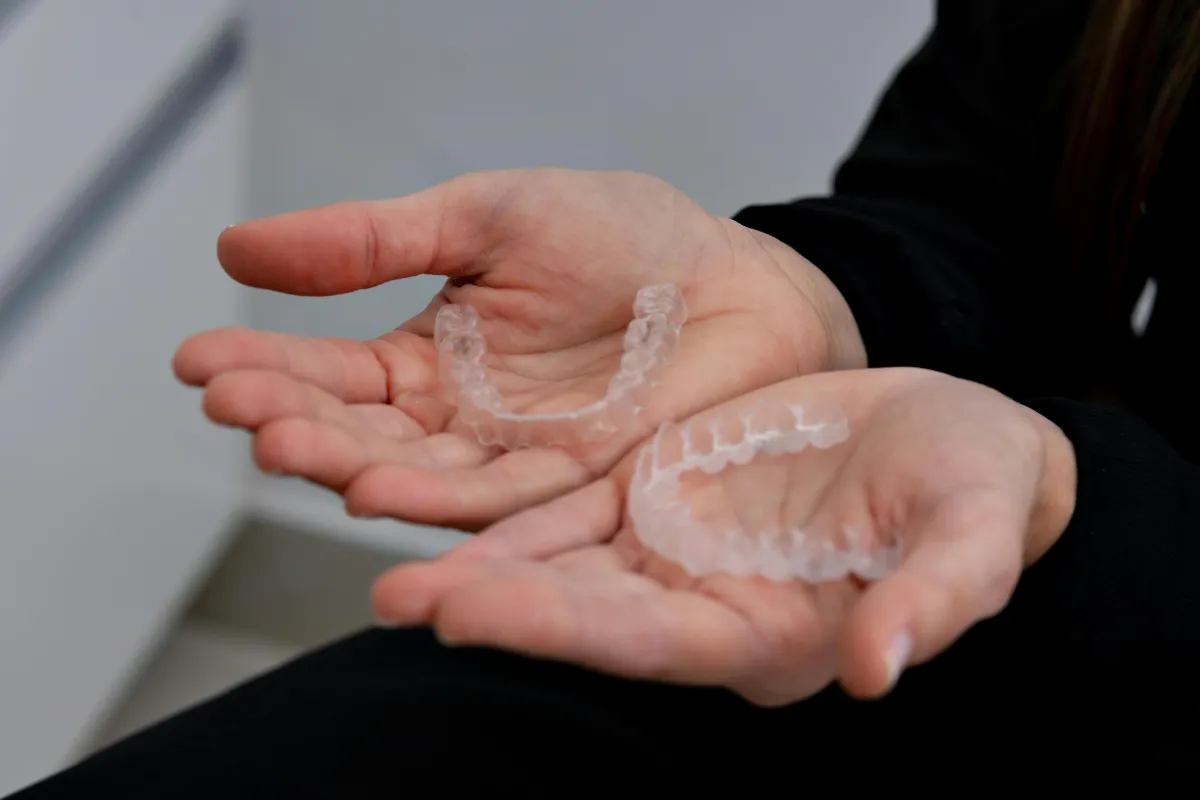
In modern orthodontics, both Invisalign and traditional braces offer solutions for achieving a straighter, healthier smile. By exploring their mechanisms, costs, oral hygiene requirements, treatment durations, and lifestyle impacts, patients can make informed decisions about which option best suits their needs.
Understand the Basics of Invisalign and Braces for Teeth Care
Invisalign aligners consist of a series of clear, removable trays that gradually shift teeth by applying gentle pressure. In contrast, traditional braces use fixed metal or ceramic brackets, archwires, and elastics to exert continuous forces for realignment. While both methods correct misalignment and improve bite function and aesthetics, Invisalign is favored for its discreet appearance and ease of removal for eating and cleaning, whereas braces are typically chosen for more severe malocclusions.
Define What Invisalign Aligners Are and How They Function
Custom-made from digital scans, Invisalign aligners employ a series of progressively adjusted trays to gradually move teeth into alignment. Each set is worn for about one to two weeks before progressing to the next phase, allowing patients to experience improvements with minimal disruption to daily activities. This method appeals to adults seeking both aesthetic and practical benefits due to its unobtrusive nature.
Explain How Traditional Braces Are Constructed and Utilized
Traditional braces involve bonding fixed brackets to the front surfaces of the teeth with an archwire threaded through them. Elastic bands may also be used to fine-tune tooth movement. This well-established system offers precise control and is particularly effective for complex cases, providing predictable outcomes even in challenging dental alignment situations.

Discuss the Specific Goals of Using Each Teeth Straightening Method
Invisalign aims to provide a discrete orthodontic treatment that allows patients to maintain normal oral hygiene and aesthetics, while traditional braces focus on precise correction of extensive malocclusions. Ultimately, both methods strive to improve bite functionality, dental appearance, and overall oral health, with the choice often depending on case complexity, patient preferences, and lifestyle considerations.
Evaluate the Differences in Comfort Between Invisalign and Braces
Comfort is an important factor in orthodontic treatment. Invisalign aligners, made from smooth plastic, generally cause less irritation to the gums and cheeks. In contrast, the metal brackets and wires of traditional braces may cause discomfort, especially after adjustments, though pain management techniques are available for both treatments.
Assess How Invisalign Aligns Teeth With Minimal Discomfort
Designed to fit snugly over the teeth, Invisalign aligners apply gentle, progressive pressure that minimizes soreness. Their smooth, flexible material reduces soft tissue irritation, resulting in fewer instances of discomfort—making them particularly attractive for patients with sensitive mouths.
Examine the Potential Discomfort Associated With Traditional Braces
Traditional braces may lead to discomfort due to the pressure from archwires and the presence of brackets. Patients often report soreness and irritation of the cheeks and lips after adjustments, though orthodontic wax, analgesics, and mouth rinses can provide relief during the initial adaptation period.
Compare Pain Management Options for Both Treatments
Pain management for Invisalign is generally straightforward, often requiring only brief periods of mild pressure managed with cold compresses or acetaminophen. Conversely, traditional braces may demand more regular use of pain relief measures, such as wax for brackets and NSAIDs during intense adjustment periods.
Analyze the Cost Factors of Invisalign Versus Braces
Cost is a major consideration in selecting orthodontic treatment. While Invisalign may sometimes be priced slightly higher due to its advanced digital scanning and custom manufacturing process, its benefits in hygiene, appearance, and convenience may justify the expense. Traditional braces, with a generally lower price range, can incur additional costs with extra adjustments or repairs, particularly in complex cases.
Break Down the Average Costs of Invisalign Treatments
Invisalign treatment typically ranges from $3,000 to $8,000. This fee often covers the cost of digital scans, manufacturing of the aligners, regular monitoring appointments, and sometimes post-treatment retainers. Financing and insurance options can help manage these expenses.
Highlight Typical Expenses Associated With Traditional Braces
Traditional braces usually cost between $2,500 and $7,000, with expenses varying based on the type of braces used and the treatment duration. Additional costs may arise from adjustment visits, replacement of damaged brackets or wires, and specialized cleaning aids when necessary.
Address Potential Hidden Costs for Both Orthodontic Options
Both treatments may involve hidden costs—such as additional sets of aligners for Invisalign if refinements are needed, or emergency repairs and extra procedures in braces. Patients should weigh these potential expenses against the long-term benefits of improved oral health and confidence.
Investigate the Oral Hygiene Requirements for Each Method
Maintaining optimal oral hygiene is critical during orthodontic treatment to prevent issues like tooth decay and gum disease. The cleaning routine differs between Invisalign and traditional braces due to the design of each appliance.
Outline Daily Care Tips for Maintaining Invisalign Hygiene
With Invisalign, patients must remove the aligners before eating, drinking (other than water), or brushing. This removable feature allows for regular brushing and flossing, and it is recommended to clean the aligners with a soft-bristle brush, non-abrasive toothpaste, and weekly soaking to prevent plaque buildup.
Detail Oral Care Practices Needed for Patients With Braces
For those with traditional braces, diligent oral hygiene is crucial. Brushing after every meal using an orthodontic toothbrush, along with interdental brushes and floss threaders, helps remove food particles from around brackets and wires. Regular dental check-ups are essential to monitor for plaque buildup and other potential issues.
Compare the Ease of Cleaning Your Teeth With Both Systems
Invisalign offers a clear advantage for oral hygiene since the aligners are removable, permitting routine cleaning without obstruction. In contrast, braces can complicate dental care by requiring additional tools and time to clean effectively, often leading to a higher risk of white spot lesions or gum inflammation.
Review the Treatment Duration for Invisalign and Braces
The treatment duration for both Invisalign and traditional braces depends on the individual’s dental condition and case complexity. While Invisalign treatments typically result in faster initial improvements, traditional braces are known for their effectiveness in more complex cases.
Discuss the Average Treatment Time With Invisalign Aligners
For many patients, Invisalign treatment lasts between 12 and 18 months. Success relies on consistently wearing the aligners for 20–22 hours per day, with regular follow-up appointments ensuring steady progress.
Examine Typical Durations for Completing Braces Treatment
Traditional braces treatment generally spans 18 to 36 months, with some cases extending beyond three years. The longer duration is often related to the need for frequent adjustments and the complexity of moving teeth into the desired positions.
Factor in Variables That Can Affect Treatment Timelines for Both
Treatment timelines can be influenced by factors such as the severity of misalignment, patient compliance with wear protocols, age, and overall oral health. Orthodontists tailor treatment plans to accommodate these variables, ensuring the most efficient and effective approach for each patient.
Consider the Impact on Lifestyle When Using Invisalign vs. Braces
Lifestyle considerations are essential since orthodontic treatments influence daily activities and dietary habits. Both Invisalign and traditional braces have unique impacts on a patient’s routine and level of convenience.
Explore the Lifestyle Benefits of Choosing Invisalign Over Braces
Invisalign’s removable design allows patients to maintain normal eating habits and routine oral hygiene. The nearly invisible aligners provide a discreet treatment option that is particularly attractive to adults and professionals who want to avoid the aesthetic drawbacks of metal braces.
Discuss How Braces May Affect Daily Activities and Eating Habits
Traditional braces require certain dietary restrictions to avoid damaging the brackets and wires, and they often necessitate extra protection during physical activities such as sports. Although these limitations can be inconvenient, many patients accept them in exchange for the reliable treatment outcomes traditional braces provide.
Highlight Any Activity Restrictions for Both Options During Treatment
While Invisalign imposes minimal restrictions as the aligners can be removed during activities, traditional braces require extra precautions, such as protective gear during high-impact sports. The level of restriction varies with the treatment option, influencing the choice based on a patient’s lifestyle and daily activities.
Frequently Asked Questions
Q: How do Invisalign aligners work?
A: Invisalign aligners are custom-made, clear plastic trays that gradually reposition teeth through steady pressure, with each set worn for about one to two weeks.
Q: Are traditional braces more effective than Invisalign for severe cases?
A: Yes, traditional braces are generally more effective for complex dental misalignments because they apply precise, multi-directional forces on the teeth.
Q: What are the most common side effects of braces?
A: Common side effects include soreness after adjustments, irritation of the cheek and lip tissues, and challenges in maintaining specialized oral hygiene.
Q: Can I remove my Invisalign aligners when eating?
A: Yes, one of Invisalign’s primary advantages is its removability, allowing you to eat, drink (except hot liquids), and brush your teeth without interference.
Q: How often should I visit my orthodontist during treatment?
A: Invisalign patients typically visit every 6 to 8 weeks, while those with traditional braces usually have appointments every 4 to 6 weeks for adjustments and monitoring.
Q: Which option requires less maintenance in terms of oral hygiene?
A: Invisalign generally demands less rigorous cleaning since the aligners are removed for routine brushing and flossing, unlike braces, which require additional cleaning tools.
Q: Are there financing options available for these treatments?
A: Many dental offices offer payment plans and work with dental insurance to make both Invisalign and traditional braces more affordable.
Q: Will wearing Invisalign affect my speech?
A: Some patients may experience a slight lisp initially, but most adapt quickly with minimal speech interference.
Q: Can adults and teens use Invisalign?
A: Yes, Invisalign is suitable for both adults and teens, with specialized systems like Invisalign Teen designed to promote compliance and personalized treatment.
Q: How do lifestyle factors influence the choice between Invisalign and braces?
A: Factors such as dietary habits, appearance preferences, and daily activities play a crucial role; Invisalign is often chosen for its discretion and ease of maintenance, while braces are preferred for severe corrections.
Final Thoughts
Both Invisalign and traditional braces are effective methods for achieving a straighter, healthier smile. Invisalign’s clear, removable aligners suit patients looking for discreet treatment with minimal lifestyle disruption, while traditional braces offer robust corrections for complex dental issues. Evaluating factors such as cost, treatment duration, comfort, and maintenance helps patients choose the method that aligns best with their oral health goals. Consulting with a qualified orthodontist is key to ensuring optimal results and long-term dental health.
By carefully considering the benefits and potential drawbacks of each option, patients can confidently choose the treatment that best fits their unique needs. Whether opting for Invisalign or traditional braces, the journey toward a more confident smile is well worth the investment in advanced, personalized orthodontic care.
Frequently Asked Questions ensure a comprehensive understanding for prospective patients interested in how lifestyle, cost, and maintenance intersect with treatment outcomes. This article not only educates patients on different orthodontic methods but also helps them prepare for a successful treatment experience that aligns with their personal and financial needs.
Book an Appointment
Ontario Dentist
Community-Centric Healthcare
Our dental office has been a pillar of dental health in the community. Our seasoned team is here to provide expert care and support for all your dental needs.
30+ years of experience
Trusted by Families
Generations trust us with Dr. Hosny's care. Our practice has grown with our patients, adapting & expanding to better meet your family’s evolving needs.
"Best Dental Office in the IE"
Knowledgable and Caring
"Besides being the best dental office in the IE, they are the most CARING and knowledgeable dental office I have ever been to! Wonderful front office staff!!"
- W. Mariner
What We Offer
Expert Services
General Dentistry
Cosmetic Dentistry
Orthodontics
Emergency Dental Care
Teeth Whitening
Dental Implants
Veneers, Crowns, and Bridges
Dentures
Gum Disease
Root Canals
At Beautiful Smiles Ontario, you’ll experience exceptional dental care in an inviting, comfortable environment where your health and smile come first. Led by the highly acclaimed Dr. Hosny, our practice is known for
excellence in both general and cosmetic dentistry.
Dr. Hosny has earned multiple prestigious awards, including Top General Dentist 2020, Best in Cosmetic Dentistry 2023, and a Top Doctor Award, reflecting his
outstanding skill, dedication, and patient care. Whether you’re seeking routine dental care or a stunning smile makeover, you can trust Dr. Hosny and his experienced team to deliver personalized, top-quality treatment with compassion and expertise. At Beautiful Smiles Ontario, we’re not just about beautiful smiles—we’re about healthy, happy patients.

Book an Appointment
126 W B Street, Ontario, CA 91762
Phone: (909) 984-4746
FAX: (909) 984-4414
Copyright © 2025 Beautiful Smiles Ontario. All rights reserved.
Hours of Operation:
Monday - Friday : 9AM - 6PM
Saturday - Sunday : CLOSED


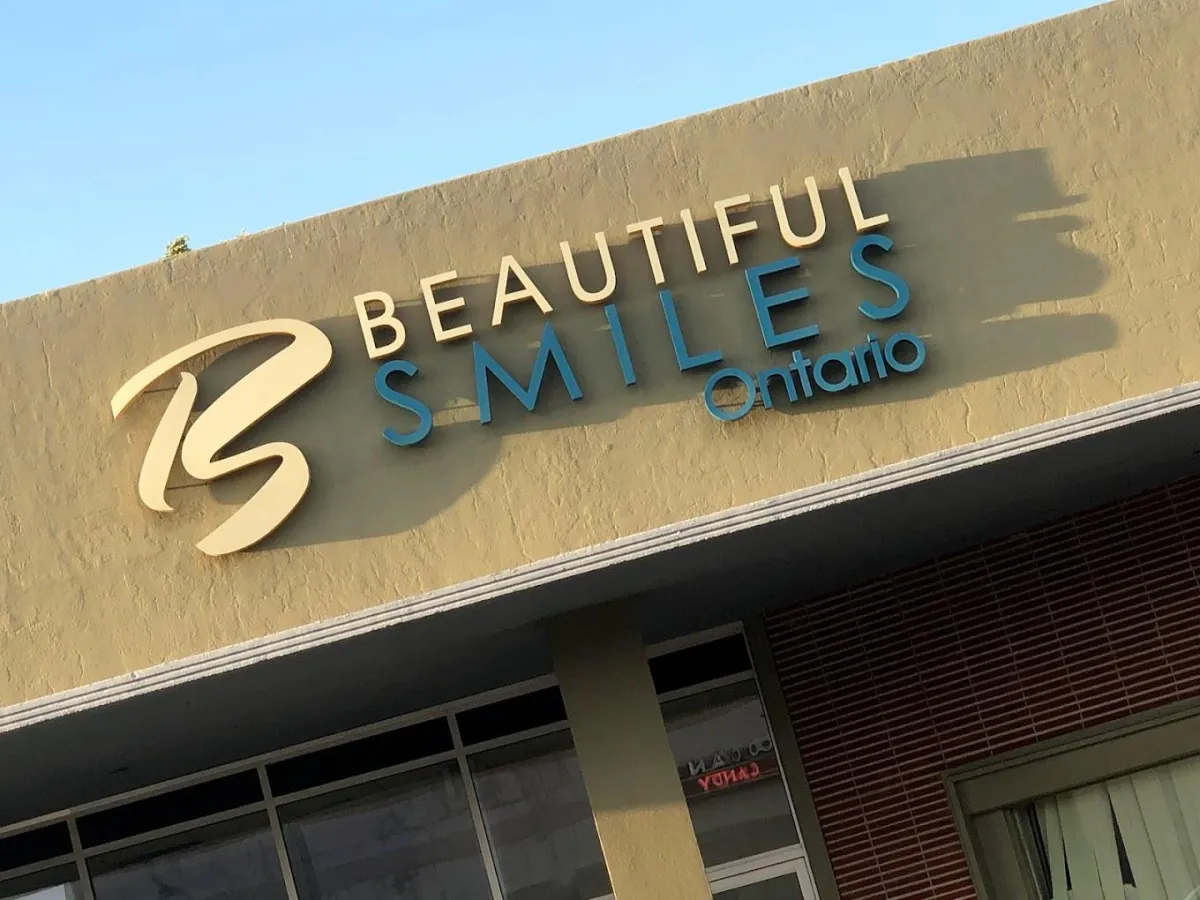

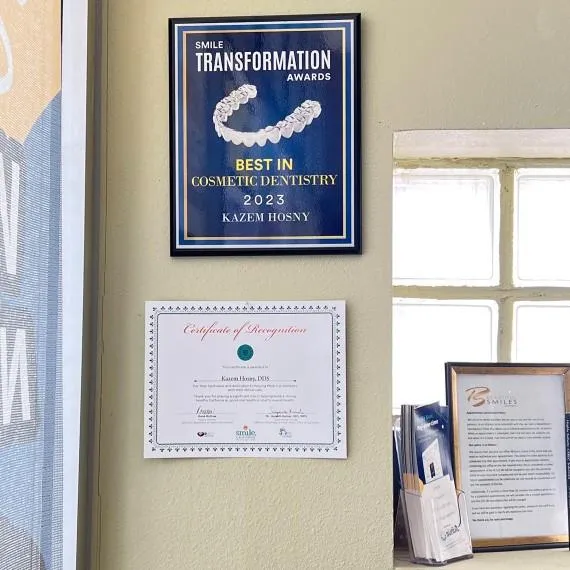

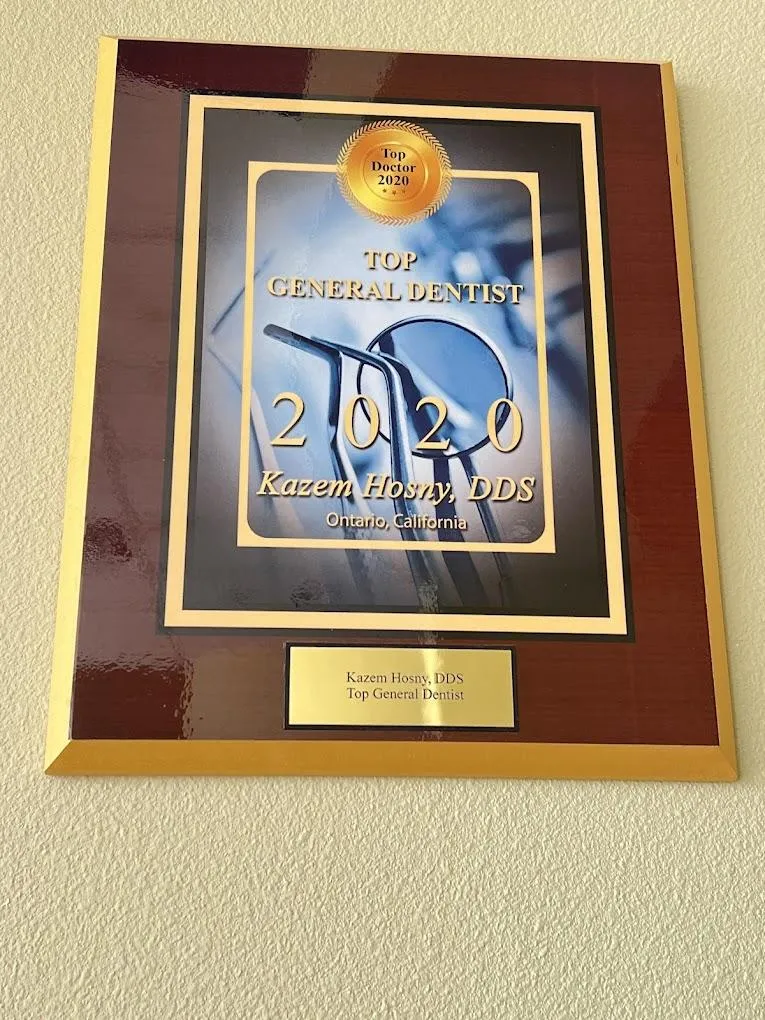
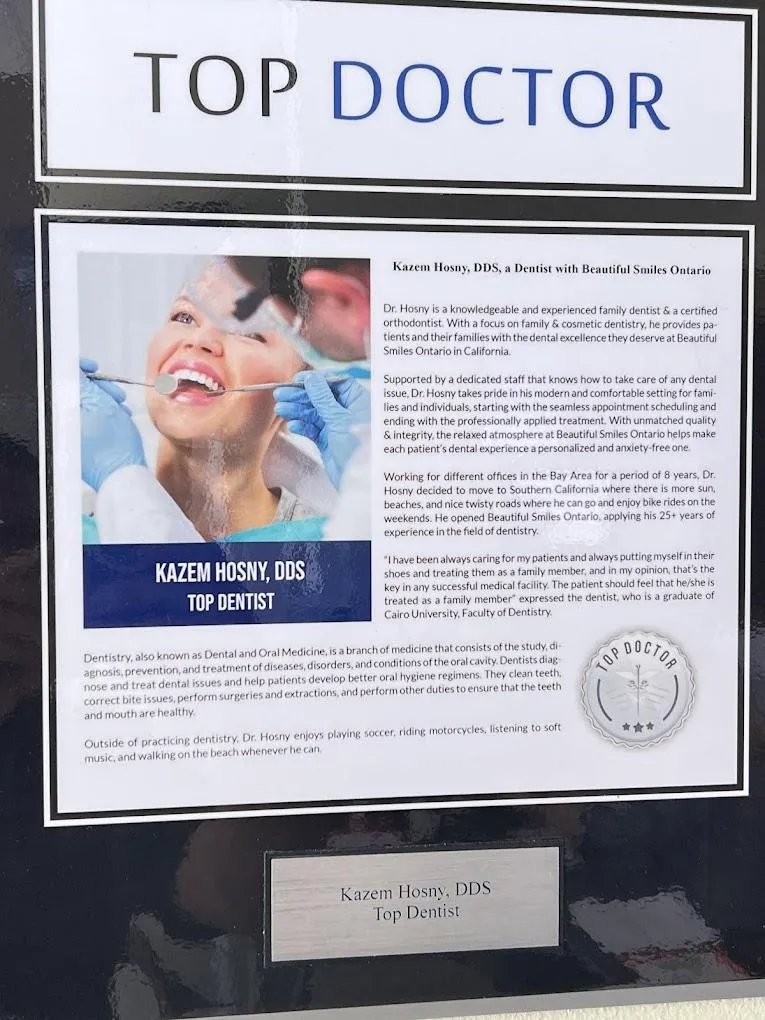
Facebook
Instagram
X
LinkedIn